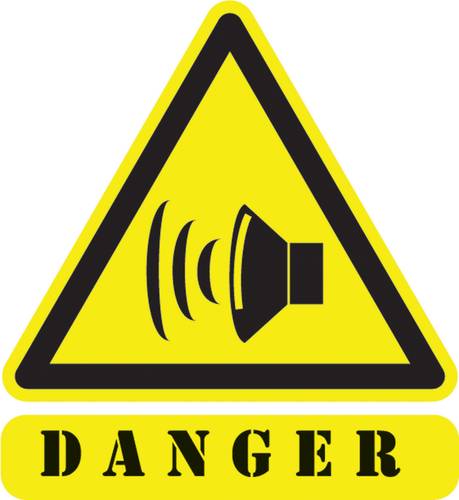The NOISE Code
A ship in compliance with the Noise Code will generate less noise and minimize deleterious impacts both on the seafarers on board and on the sea life in the vicinity
Maritime Safety Committee adopted the Code on Noise Levels on board Ships, Resolution MSC.337(91), commonly referred to as the Noise Code. The Noise Code is being made mandatory by means of Resolution MSC.338(91), which amends the SOLAS Convention to add new Regulation II-1/A-1/Reg. 3-12 – Protection against noise. In accordance with this new regulation, the Noise Code will apply to ships of 1,600 gross tonnage and above: (1) for which the building contract is placed on or after 1 July 2014; (2) in the absence of a building contract, the keels of which are laid or which are at a similar stage of construction on or after 1 January 2015; or (3) the delivery of which is on or after 1 July 2018. On existing ships, measures should be taken to reduce machinery noise in machinery spaces to acceptable levels as determined by the flag Administration. Certain vessels, such as high speed craft, pipe-laying barges, dredges, and mobile offshore drilling units, are exempted from the mandates of the Code.
The 2012 Noise Code effectively replaces the voluntary 1981 Noise Code [Res. A.468(XII)], which becomes the standard by which existing ships are to be judged. In the event, though, of repairs, alterations, and modifications of a major character and outfitting related thereto of existing ships, the areas in which changes have been made should meet the requirements of the 2012 Noise Code insofar as the flag Administration deems reasonable and practicable. Consideration must also be given to Resolution A.343(IX), Recommendation on Methods of Measuring Noise Levels at Listening Posts. This 1975 resolution relates to interference by shipborne noise with the proper reception of external audible navigation signals.
The purpose of the 2012 Noise Code is to limit noise levels and to reduce seafarers’ exposure to noise in order to: (1) provide for safe working conditions; (2) protect the seafarer from noise-induced hearing loss; and (3) provide the seafarer with an acceptable degree of comfort in rest, recreation, and other spaces. To achieve these goals, requirements and recommendations are made for: (a) measurement of noise levels and exposure; (b) protecting the seafarer under conditions where it is not feasible to sufficiently limit the noise level; (c) limits on acceptable noise levels for all spaces to which seafarers normally have access; and (d) verification of acoustic insulation between accommodation spaces.
The Noise Code requires that the noise level be measured throughout the ship during sea trials at all points where the work of the ship is carried out and that a Noise Survey Report be prepared and retained on board. Noise level measurements should also be taken when the ship is in port, particularly to measure noise from the ship’s cargo handling equipment. The report must be accessible for the crew. Additionally, noise issues are to be included in the ship’s Safety Management System (SMS) and the seafarers must receive training on the company’s noise policy, hearing protection, and exposure limits. Oddly, the Noise Code has no provision for issuance of a certificate issued by a third party to evidence compliance to the flag Administration or a port state control boarding officer.
The Noise Code provides a table of noise level limits, measured in dB(A), for work spaces, navigation spaces, and accommodation spaces. One set of limits is for small vessels (1,600 up to 10,000 GT) and a second set of limits is applicable to larger vessels. Actually the two sets are the same except with regard to most accommodation spaces, where the smaller vessels are accorded slightly more leeway.
In spaces with sound pressure levels exceeding 85 dB(A), suitable hearing protection, as defined in the Code, should be used. Alternatively, time limits for exposure to the excessive noise levels should be established. No crew member should be exposed unprotected to peak values exceeding 135 dB(C). A hearing conservation program may be provided for seafarers working in excessive noise spaces in order to train them in the hazards of noise and use of hearing protection and to monitor hearing acuity.
Consideration should be given to the acoustic insulation between accommodation spaces in order to make rest and recreation possible even when activities are going on in adjacent spaces (e.g., music, talking, cargo handling, machinery operation). The Code provides a set of sound insulation indices for bulkheads between various spaces, such as between two cabins and between a cabin and a messroom.
When the noise level in a particular space is greater than 85 dB(A), entrances to the space must carry a warning notice comprised of a standardized warning symbol and supplementary information in the working language of the crew. If only a minor portion of the space has excessive noise, then the warning sign is to be posted at eye level visible from each direction of access to that portion.
Perhaps of greatest value, the Noise Code includes in an appendix suggested methods for attenuating noise. The need for noise control should be taken into account at the design stage when deciding which of different designs of engines and machinery are to be installed, the method of installation and the siting of machinery in relation to other spaces, and the acoustic insulation and siting of accommodation spaces. Every ship and the available options are different, but the basic concept is that with a carefully planned design shipboard noise can be minimized and the need for such prophylactics as ear protectors can be reduced.
Isolation of the sources of noise is a generally favored method for its attenuation. Where practicable, engines or machinery that produce noise in excess of acceptable levels should be installed in compartments that do not require continuous attendance. Accommodation spaces should be located as far away, both horizontally and vertically, as possible from sources of noise such as propellers and propulsion machinery. Suitable partitions, bulkheads, decks, and insulation should be used to prevent the spread of sound. Exhaust systems should be arranged so that the inflow and outflow orifices are remote from places frequented by seafarers. Mufflers, silencers, noise-cancelling equipment, and attenuators should be fitted as needed. The control room for engineering spaces should include sound-reducing measures to the maximum extent practicable. Manufacturers should be asked to supply information on the sound produced by their machinery and recommended methods of installation to minimize noise levels. Machines should be supported on carefully selected resilient mountings. Use of noise-cancelling equipment should be considered if other methods fail to reduce noise to acceptable levels.
The Noise Code will serve an important ancillary purpose. There has been much research indicating that ships generate excessive noise that has a significant dilatory effect on sea life. Marine mammals, in particular, rely on echo-location and vocalizations. Other animals detect prey and predators by sound. Ship noise (and other human-generated noise in the sea) interferes with these vital functions. The National Oceanic and Atmospheric Administration (NOAA) is examining the issue of ocean noise and whether and how it might be regulated under provisions of the Marine Mammal Protection Act. In 2008, the IMO established a work program of the Marine Environment Protection Committee (MEPC) on “Noise from commercial shipping and its adverse impact on marine life”. That program is ongoing, but it examining issues such as noise from propellers and machinery. A ship in compliance with the Noise Code will generate less noise and minimize deleterious impacts both on the seafarers on board and on the sea life in the vicinity – a win-win situation.
(As published in the April 2013 edition of Maritime Reporter & Engineering News - www.MarineLink.com)














